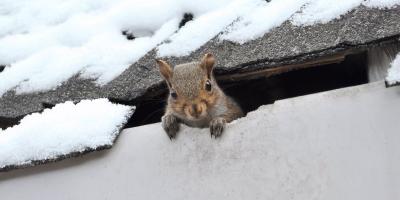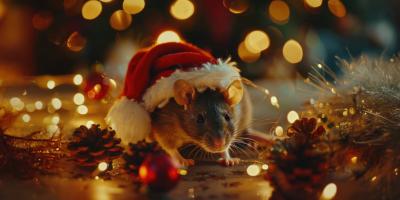Your Secret Weapon to Cleaning Up Stink Bugs

One of the very best things about living in New England is that we are treated to four distinct seasons. Sure, some of them might overlap a bit -- we’ve had hard winters that feel like eternities -- but, for the most part, we get to enjoy what each new season brings.
However, the huge variations season-to-season aren’t for everyone. Humans aside; animals, insects and wildlife each have their own favorite seasons, as well as their own ways of dealing with the less preferable seasons.
For some species, this might mean seasonal migration, hibernation, or some unique methods of allowing a select few of their kind to survive and carry on the following year.
Fall invaders, for example, like stink bugs and western conifer seed bugs, have discovered their own way of surviving the winter, which is exactly how they got their nickname.
Let us explain how you can fight back against these fall invader species and what you should do now to ensure they stay off your property next year, so you can enjoy a stink bug free season.
The 411 on Fall Invaders
Of all the fall invader species, the stink bug and western conifer seed bug are debatably the greatest nuisances in the category, simply due to their smell. Fall invaders are so named because, as the temperature drops with winter’s approach, these species invade properties to survive the colder season. That’s why you’ll typically encounter a stink bug in your home sometime during the late summer or early autumn.
Despite popular belief, the stink bug and western conifer seed bug are actually different species; however, they are handled the same way, both with DIY control methods and professional pest management.
You know you’re dealing with a stink bug if it fits the following characteristics: shaped like an oval, sometimes described as a shield, adult stink bugs measure nearly 2 cm long. Almost as wide as they are long, their six legs extend outwards from the sides of their bodies, making them look even bigger. Although their wings do not appear until adulthood, stink bugs are adept at flying. Of course, the most obvious sign of a stink bug is the smell they emit when either crushed or otherwise disturbed.
Similarly, western conifer seed bugs are considered a nuisance for attempting to access your home in order to overwinter the harsher season. They, too, produce an unmistakable odor if they wind up squashed underfoot. The primary physical distinction separating western conifer seed bugs from stink bugs is their lower hind legs, which are widened on each side, making it look as though a teeny leaf is attached.
The trick to fighting back against these fall invaders is that, once inside, they actually can’t be treated. Snug inside your cozy abode, stink bugs and western conifer seed bugs are perfectly content and do not eat, reproduce or build nests, which makes treating them rather complicated.
That’s why prevention is the best method for dealing with fall invader species, especially since these bugs are notorious for hitting the same houses year-after-year.
Luckily, if your home is suddenly host to fall invaders like the stink bug and western conifer seed bug, there are things that a homeowner can do to help reduce the population.
Victory is as Simple as Vacuuming
That’s right. Our highest-recommended DIY method for corrective fall invader pest management is your vacuum cleaner. Sucking up stink and seed bugs is the easiest way to knock down their numbers.
Pro-tip: We highly recommend that you purchase a second, cheap vacuum cleaner that is reserved strictly for stink bug removal. Ideally, you want to purchase one that comes with a removable canister for easy emptying outside. Otherwise, you run the risk that the bugs will stink up the bag and, ultimately, your home.
Of course, victory in this case will be temporary. Unless you partner with a pest control professional for preventive maintenance, nothing will stop the stink bugs from coming back next year, no matter how many of them you suck up in your vacuum.
That said, timing is everything when it comes to effective stink bug prevention. Late summer is the ideal time for professional service to keep fall invaders off your property when the leaves start falling.
If you’ve seen fall invader pests in your home this year, we invite you to call in now to get on our list for service next year.



